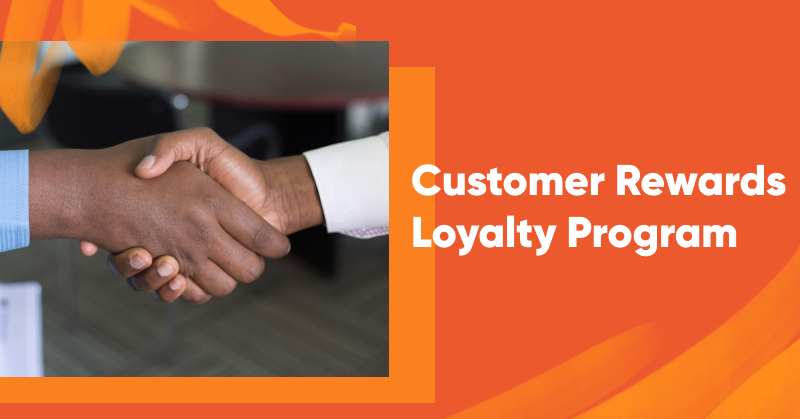Sales rewards programs, loyalty cards, perks – these terms have become staples in the modern business landscape. But what exactly makes a customer loyalty program effective?
Loyalty programs not only incentivize existing customers to keep coming back but also help you gather valuable data about consumer preferences and behavior.
But creating a successful loyalty program is no walk in the park. It requires careful planning, strategic implementation, and a deep understanding of what motivates your customers.
So, what are the key components of winning customer loyalty programs?
In this blog post, we’ll explore the essential elements of loyalty programs, analyze a great example of online loyalty, and see how you can build your own program.
Let’s jump in!
What is a loyalty program?
A loyalty (or rewards) program is a structured marketing strategy designed to incentivize customers for their repeat business.
Think of it as a way of saying “thank you” to your loyal customers by offering them different rewards (monetary rewards or non-monetary rewards), discount codes, or special perks every time they make a purchase.
These programs typically involve customers signing up for memberships or loyalty cards, which allows you to track their purchases and reward them accordingly.
The rewards can vary widely, from points that can be redeemed for discounts or freebies to exclusive access to VIP events or early product releases.
Why sales rewards programs are important?
Acquiring new customers can be up to 25 times more expensive than retaining existing ones.
This is where loyalty or reward programs come into play, offering businesses a powerful tool to cultivate customer loyalty and drive repeat sales.
These programs are important for several reasons:
- Customer retention: By rewarding customers for their loyalty, you can significantly reduce churn rates and increase customer lifetime value. When customers feel appreciated and valued, they’re more likely to stick around and continue doing business with a company.
- Increased sales: Loyalty programs incentivize customers to make repeat purchases to earn rewards, resulting in a steady stream of revenue for businesses. Additionally, loyal customers are more likely to spend more on each transaction and try out new products.
- Data insights: Loyalty programs provide valuable data about your customer’s purchasing behavior, preferences, and demographics. This data can be used to personalize marketing efforts, improve product offerings, and increase the overall customer experience.
- Competitive advantage: A well-designed program can set you apart from your competitors and give you a competitive edge in the market.
How to start a customer loyalty program?
Your team has put their blood, sweat, and tears into creating a killer brand… So when it comes to implementing a rewards program, you should spend a bit of time considering how you want that beautiful brand to shine through.
Sure, customers will sign up because of the rewards and special offers, but your program’s success in the long run has a lot to do with the way your customers and brand connect.
So how do brands make this connection happen?
1. It’s all in the name
Common names for a rewards program very closely revolve around the terms “Loyalty program” or “Rewards.” And that’s fine because people know exactly what that means… but think about whether or not your customers expect more creativity.
The title of your sales incentive program is a great way to inject a bit of fun, luxury, or quirkiness into the program. The name also gives you a chance to capitalize on curiosity.
For example, National’s rewards program is called Emerald Club which is a perfect reference to the brand’s distinctive green color.
MAC Select is the name of MAC’s recently launched program, a name that represents simplicity and exclusivity.
Then there’s Pet Supplies Plus, which came up with the name “Preferred Pet Club” for their animal-loving shoppers.

2. Seeing stars? Points? Coffee beans?
“Points” and “miles” have become industry standard names for the currency that customers earn and spend in rewards programs.
And while there’s no doubt that these are effective terms, you should know that you have the freedom in your own rewards program to choose something new.
Giving points a different name that is still connected to your organization, of course, is a fun way to make an impression. A map and atlas wholesaler might give out 2 “flags” per dollar spent.
An organic dog food brand could offer 100 “treats” with the purchase of a large bag of kibble, and a shoe store might let customers earn, well, “shoes”!
3. Give a chance for people to earn without spending
There’s one problem with building a sales incentive program that rewards only purchases. Sure, you’ll get people to sign up and come back, but if your shoppers feel like they’re being used for their hard-earned pennies, you risk having a failed rewards program.
Build a program that rewards other engagements and actions in your store. For example, offer points when shoppers read your latest blog post or check out your latest video.
Reward customers for sharing your pages and referring their friends. And, as time goes on and your program grows, reevaluate from time to time to see what new types of actions you’d like to reward.
Keeping the program fresh through the years will keep your longest-standing members interested.
4. Build a community
Loyalty programs are a great way to improve sales, but they’re also an excellent excuse to connect with customers in new ways. Use it as a platform to communicate your own initiatives.
Don’t forget what’s important to you and them! Share content and reward actions that are linked to your community.
Working on any social causes or volunteer programs? Make a video about it and reward those who watch.
Did you know that Office Depot actually gives rewards to their customers who recycle? That’s a really cool way for the company to put its ideals on display and show they care about the environment.

5. Look for opportunities to personalize communication
Encourage customers to give you information related to their interests during registration. Or get more info later by giving points to users who complete their profiles. That’s a pretty good incentive if you ask me!
Customer profiles are a way to keep track of consumer interests and are the key to personalized communication.
Create segmented lists based on customer interests (i.e. home/office; cat person/dog person; bride-to-be/ wedding guest) and send targeted communications to shoppers with common interests.
This makes your communications more relevant and increases the chance that recipients will open your offers, click through and, in the end, make a purchase.
Let’s look at an example of online loyalty done right
A great example of loyalty done well is the Balance Rewards program from Walgreens, an omnichannel brand that has quite a presence with their iconic corner stores and on walgreens.com.
Balance Rewards has taken their health-centric mission to the next level by actually rewarding customers who put effort into leading and tracking a healthy lifestyle: like the amount of miles people work every day, or if they eat healthy food such as keto fruits or not.

The health, beauty, and pharmacy retailer has a traditional in-store loyalty card strategy, which is tied to their ecommerce presence as well, including special online offers and an online loyalty center where customers can check in and see what rewards they’ve earned, and what else they can do to earn more.
One thing they’re doing really well is letting shoppers know about their loyalty program on several areas of the website.
Of course, there’s a dedicated page for loyalty, so the customers who know about the program can go directly there and read more about it.
But for visitors who go directly to www.walgreens.com, it’s also visible on the homepage:

Also, in order to reach visitors who arrive on the website while searching for certain products such as vitamins, loyalty offers are listed as a link to learn more on relevant product pages.
That provides an opportunity for those customers to learn more about the program, and convert them into a new register.
This is really important. I repeat this is really important!
Why?
Because online shoppers enter websites through a multitude of pages, often coming in from Google or other search platforms, often going directly to a particular product page.
So the more visible your rewards program is, the more likely it will reach all of your curious shoppers:

Begin building your own sales incentive program
Now that you’ve seen many of the building blocks of a rewards program, it’s your turn. How can you go about setting one up?
There are several options.
1. Have your team build it
This is a great way to ensure a one-of-a-kind loyalty program. But like many development projects, it’s expensive and time-consuming.
Creating a unique and complete loyalty program involves a lot of research time and, as you can imagine, a whole bunch of developing and testing.
2. Hire an agency to develop your rewards program
The distinct benefit of using an agency is that it will save you a lot of time and allow you to focus on your core business.
However, this particular route usually comes with the highest price tag.
3. Go with a loyalty platform
Find an app like Antavo Loyalty software, which is already built and runs automatically, saving your team time and monetary resources. Use the application asis or ask for custom developments based on your store and business model.
Ensuring that your rewards program is relevant is the key. It should be relevant to your goals.
And the language and feel of the program should be relevant for your customers.
Think about how new visitors come to your site and make sure the rewards program is a visible part of your pages.
Finally, make sure you have a way to track customer activity in the loyalty program.
Wrapping up
A rewards program that gives points (or stars, or miles) for a multitude of actions, rather than purchase-only rewards, is more likely to hold customer attention in the long run. Make sure targeted communication is a part of your rewards program and keep it fresh through the years.
Our experience at Antavo Loyalty Software is that a good loyalty program can increase returning customers by 200%, as well as help you increase average basket value for a great ROI.
So go ahead and start encouraging purchase completion for your first-time shoppers, rewarding medium-frequency buyers, and showing each and every one of your customers that you truly appreciate their business!
Author Bio
Jessica Mizerak is a Customer Loyalty Strategist at Antavo, a loyalty marketing software for ecommerce companies. Antavo can increase returning customers by 200% and has helped over 30,000 marketers increase customer engagement since 2011. In her spare time Jess enjoys painting teddy bears and reading about creative ad campaigns.









